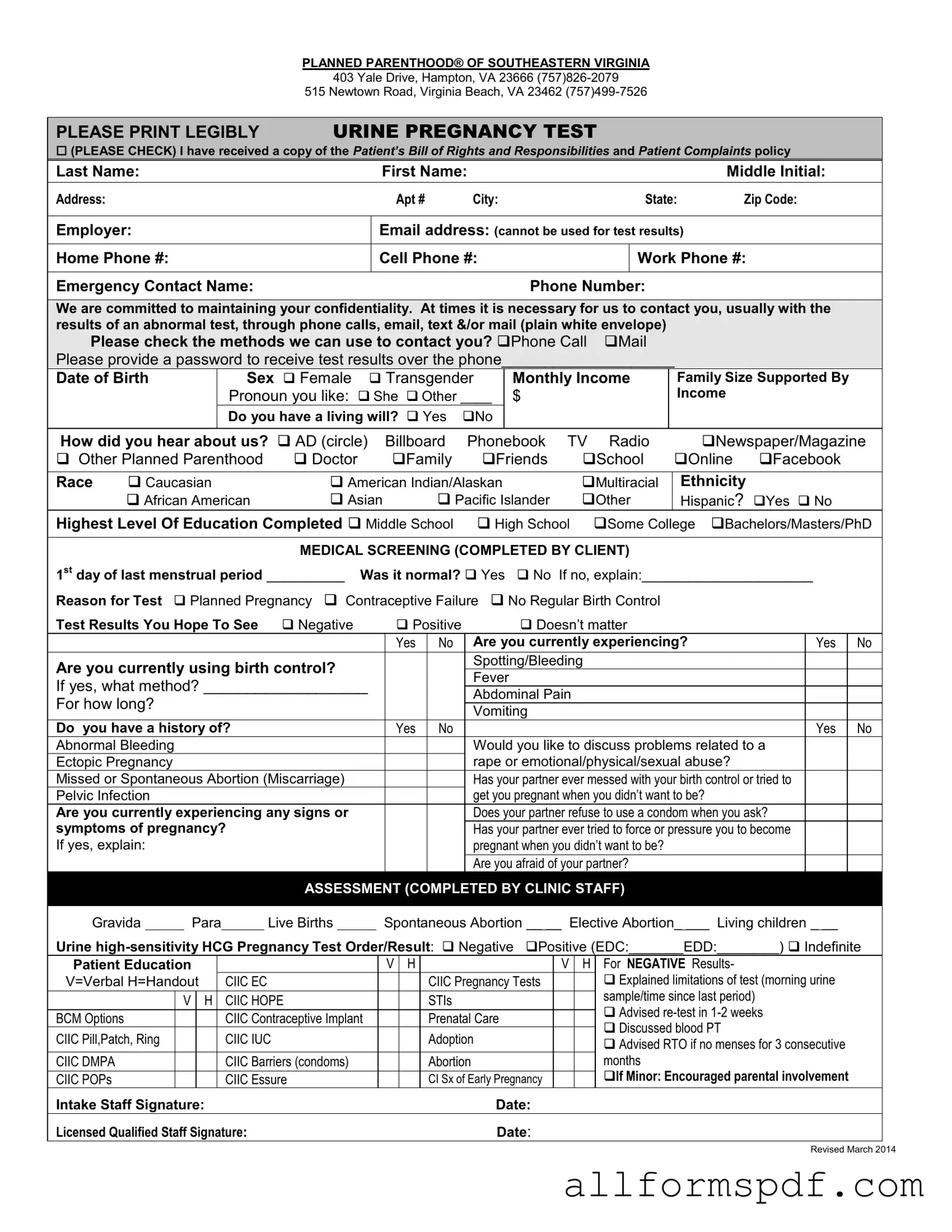Filling out the Planned Parenthood Proof form can be straightforward, but several common mistakes can lead to delays or complications. One significant error is failing to print legibly. Handwriting that is difficult to read can cause misunderstandings or miscommunications regarding personal information, such as names or addresses. This mistake can hinder the process of obtaining test results or scheduling appointments.
Another frequent mistake involves omitting essential personal details. Applicants often forget to include their full name, date of birth, or contact information. Missing this information can result in delays in processing the form or even a complete inability to contact the individual for follow-up care.
Many people also neglect to check the appropriate boxes regarding their preferred methods of communication. By not indicating whether they prefer to be contacted via phone or mail, patients may miss important notifications about their test results. This can lead to unnecessary anxiety and uncertainty.
Another common oversight is not providing a password for receiving test results over the phone. This password is critical for ensuring confidentiality. Without it, staff may be unable to share results, leaving patients in limbo regarding their health status.
Some individuals fail to answer all medical screening questions accurately. For instance, they may skip questions about their menstrual history or current symptoms. Incomplete answers can lead to incorrect assessments and potentially affect the care they receive.
Another mistake is not specifying the reason for the test. Patients might choose multiple reasons without indicating which one is most relevant. This can confuse the clinic staff about the urgency and nature of the care required.
Additionally, individuals sometimes overlook the section regarding their partner's involvement in their reproductive health. Questions about birth control and partner pressure are essential for understanding a patient's situation. Incomplete responses may prevent staff from providing the necessary support and resources.
Lastly, failing to sign and date the form can lead to significant delays. Without a signature, the form is not valid, and patients may need to fill it out again. This oversight can be easily avoided by double-checking the form before submission.
